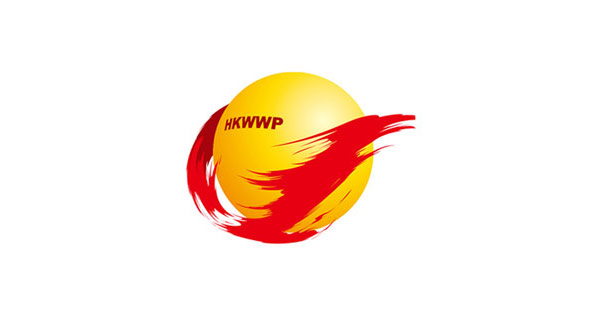 ■政府再次提高法定最低工資,保障基層工人的權益。 資料圖片
■政府再次提高法定最低工資,保障基層工人的權益。 資料圖片【原文】行政長官會同行政會議1月11日通過,將法定最低工資水平由每小時34.5元增至每小時37.5元。如獲立法會通過,將於5月1日實施。此次法定最低工資增幅8.7%為歷來最高,看似加幅很大,實則只有3元,最無議價能力的基層打工仔得益並不多。因此各方應體恤基層貧苦,有必要檢討最低工資的調整機制,增加打工仔的薪酬,政府更要帶頭督責外判公司,切實保障外判工人的權益,促進社會和諧。
本港法定最低工資於2011年5月1日開始實施,定為時薪28元,每兩年作一次檢討和調整,2013年、2015年、2017年分別調升至30元、32.5元、34.5元。
此前最低工資加幅多落後於通脹。此次勞方最初建議最少加至38元,但資方還價至36元。經過艱辛拉鋸後,確定為37.5元,與勞方要求的「僅差」5毫子,加幅略高於通脹。
本港法定最低工資,即使加至每小時37.5元,仍屬於偏低水平。目前其地國家或地區的最低工資,以港元計,台灣約38.8元、韓國59.5元、日本約63.5元。全球第一個設定最低工資的新西蘭約88.6港元,今年4月1日新西蘭法定最低工資將調至約94港元。
去年底,本港民間團體樂施會倡議,推出生活工資每小時 54.7元,讓僱員的工資可養活家庭、保障基本的生活水平。
時薪54.7元看似叫價很高,但換算成一人住戶月薪也只有1.1萬元,但這一偏低的生活工資水平,仍是此次增加3元後最低工資的1.46倍。可見,本港最低工資水準,在讓工人用勞力賺取有尊嚴的生活,有相當差距。
一向以來,對增加最低工資,資方總認為會加重經營壓力,更指稱增加最低工資實施將引發逐級加工資的「漣漪效應」,最終無奈要向消費者轉嫁。
事實上,本港自落實最低工資以來,並無發生企業因此而倒閉、經濟衰退的情況。相反,經濟連年增長。本港2017年實質經濟增長3.8%,2018年預計全年經濟增長3.2%,2018年頭9個月通脹為2.5%。市民收入在扣除通脹後,普遍有實質增幅。更要看到的是,落實最低工資後,失業率基本保持在3%的低水平,幾乎全民就業。因此,提升最低工資有利基層勞工,也有利經濟、社會穩定,各界應更多地正面看待。
目前保安、飲食等行業需要用起碼高於最低工資一成的薪酬才能請到人,各行各業都有人手不足的現象。現時領取最低工資的勞工,相當部分是政府外判服務的工人,約有2至3萬名,他們是人力市場上最無競爭力的一群,也是最需要保障的一群。因此,政府要承擔責任,嚴格督促外判公司,相應調高外判工的薪酬,防止損害最底層勞工的權益。 (標題為編輯所加) (摘錄自香港文匯報社評12-1-2019)
Further Increase Minimum Wage Benchmark to Protect Economic Well-being of Low-paid Workers
【譯文】The Chief Executive in Council endorsed on January 11 the increase of the statutory minimum wage (SMW) from HK$34.5 per hour to HK$37.5. Subject to the approval of the Legislative Council (LegCo), the revised SMW rate will come into force on May 1.
At first glance, the record-high 8.7 per cent increase seems to be a drastic leap in minimum hourly wage. The actual increase, however, is merely HK$3. Grassroots who have the least bargaining power in negotiating remuneration packages can barely benefit from this minimum wage hike.
Therefore, different sectors of the society should be more sympathetic with those who suffer in poverty. Also, a review on the adjustment mechanism of SMW and an increase in low-paid workers' wage is necessary. The government must take the lead and supervise its outsourced contractors, so as to effectively safeguard the rights of outsourced workers and ultimately promote social harmony.
SMW has come into effect since May 1 in 2011 at an initial rate of HK$28 per hour. It is reviewed biennially, and was subsequently raised to HK$30 per hour in 2013, HK$32.5 per hour in 2015 and HK$34.5 per hour in 2017.
Previously, most of the minimum wage hikes lagged behind inflation rates. This time, unionists suggested to raise the minimum wage to at least HK$38, with employers making their counter-offer at HK$36. After some intense negotiations, a deal was struck at HK$37.5. The rate is only HK$0.5 below what the unionists bargained for, and has slightly outpaced inflation.
Even though the local SMW is now increased to HK$37.5 per hour, it is still at a low level. Looking at other countries or regions, the current minimum wages in Taiwan, South Korea and Japan are around HK$38.8, HK$59.5 and HK$63.5 respectively. In New Zealand, the first country in the world to embrace the idea, the minimum wage is now at approximately HK$88.6. It will be further raised to about HK$94 in April 1 this year.
At the end of last year, the non-governmental organisation Oxfam Hong Kong proposed the introduction of an hourly living wage of HK$54.7, in the hopes of enabling employees and their families to make a reasonable living and secure a decent standard of living. An hourly rate of HK$54.7 may seem to be a lot, but when converted as the income of a one-person household, it is merely HK$11,000 per month.
However, this proposed living wage is still 1.46 times higher than the minimum wage, which has been hiked by HK$3 already. It is obvious that the SMW rate in Hong Kong is insufficient to let employees to earn a dignified living through labour and hard work.
Employers have always believed that an increase in minimum wage will bring financial burden to businesses. It is even claimed that minimum wage hikes will trigger a ripple effect, with those making more than the minimum wage asking for a raise. They believe the increased costs would ultimately be shifted onto consumers.
In fact, SMW has not caused any business closures or economic recessions in Hong Kong since its implementation. On the contrary, our economy have seen steady growth year after year.
Hong Kong has seen a 3.8 per cent economic growth in real terms in 2017. GDP growth for 2018 as a whole is expected to be 3.2 per cent, while inflation rose to 2.5 per cent in the first 9 months of 2018.
As the economic growth is well above the rate of inflation, there should be a real rise in workers' wages. More importantly, Hong Kong has virtually seen full employment, as the unemployment rate has remained steady at a very low 3 per cent since SMW came in force. It is very clear that minimum wage increase is beneficial to both the grass-root workers, the economy and the society as a whole. The public should look at the issue with more positivity.
At present, employers in the security services and the food and beverages sectors have to offer wages of at least 1.1 times the SMW rate if they were to successfully hire workers. Many other industries are also facing a shortage of workers. A large proportion of the low-paid workers who are earning SMW rate only are employed by the government's outsourced contractors. These approximately 20,000 to 30,000 workers are the least competitive ones in the labour market. At the same time, they are the most needy group.
Thus, the government should take up the responsibility and urge its outsourced contractors to lift the wages of their workers, thereby protecting the rights and interests of the workers at the bottom.■Jeffrey Tse (ywc_jeffrey@hotmail.com)
Exercise
1. 本地生產總值
2. 自僱人士
3. 貧窮門檻 / 貧窮線
4. 次承判商 / 判頭
5. 佣金
Answer
1. gross domestic product (GDP)
2. self-employed persons
3. poverty threshold / poverty line
4. subcontractors
5. commission

